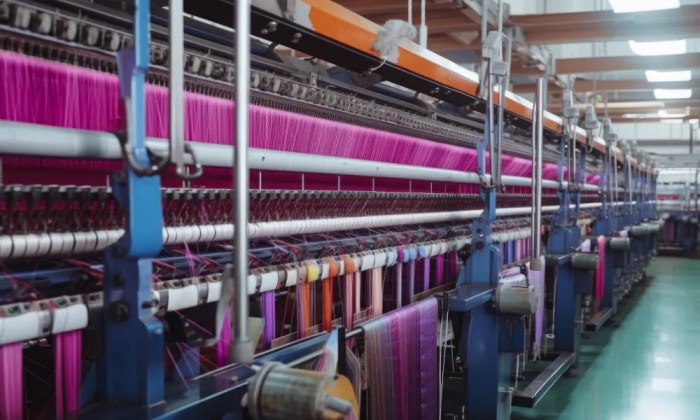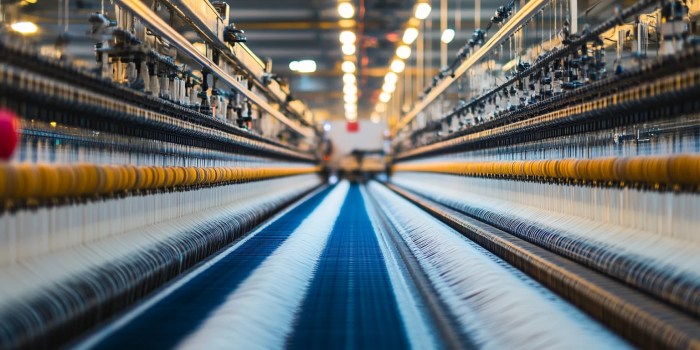
Dive into the world of Textile manufacturing technologies, where innovation meets impact in the most fascinating ways. From automation revolutions to 3D printing marvels, this topic is a rollercoaster of technological wonder!
Let’s explore how these advancements are reshaping the textile industry and paving the way for a future where fabric production is more efficient, sustainable, and downright cool.
Textile manufacturing technologies
The textile manufacturing industry has seen significant advancements in recent years, driven by technological innovations that have revolutionized traditional processes.
Automation in textile manufacturing
Automation has played a crucial role in transforming the textile manufacturing industry, enhancing productivity, efficiency, and quality. Automated systems have streamlined production processes, from spinning and weaving to dyeing and finishing, reducing human intervention and minimizing errors. For example, robotic arms are now used for precise cutting and stitching of fabrics, ensuring consistency and accuracy in the final products. This automation not only speeds up production but also improves overall product quality.
Impact of 3D printing on textile manufacturing
D printing has introduced a new dimension to textile manufacturing processes, allowing for the creation of intricate and customized designs that were previously not possible with traditional methods. This technology enables the printing of fabrics layer by layer, offering designers endless possibilities for creating unique textures, patterns, and structures. 3D printing also reduces material waste and production time, making it a sustainable and cost-effective solution for textile manufacturers.
With the ability to produce complex shapes and prototypes quickly, 3D printing is revolutionizing the way textiles are designed and manufactured.
Textiles and Nonwovens
Textiles and nonwovens are two distinct categories of materials used in various industries. While textiles are produced through weaving, knitting, or felting, nonwovens are manufactured using different processes. Let’s delve into the differences between the production processes of textiles and nonwovens.
Production Processes
- Textiles: Textiles are primarily produced through weaving or knitting, where yarns are interlaced to create fabric. This process involves the use of looms or knitting machines to create different types of textiles such as cotton, silk, wool, and synthetic fibers.
- Nonwovens: Nonwovens, on the other hand, are produced without weaving or knitting. Instead, fibers are bonded together using methods like thermal, mechanical, or chemical processes. This results in a nonwoven fabric that is durable, versatile, and cost-effective.
Applications of Nonwoven Fabrics
Nonwoven fabrics find applications in various industries due to their unique properties.
- Medical: Nonwovens are commonly used in the medical field for products like surgical masks, gowns, and wound dressings due to their breathability and barrier properties.
- Automotive: Nonwoven materials are used in the automotive industry for car interiors, insulation, and filtration components due to their strength and sound absorption properties.
- Hygiene: Nonwovens are used in hygiene products such as diapers, wipes, and feminine hygiene products due to their softness, absorbency, and fluid repellent properties.
Manufacturing Process and Materials
- Manufacturing: Nonwovens are manufactured by bonding fibers together using processes like spunbonding, meltblowing, or needle punching. These methods create nonwoven fabrics with different characteristics suitable for various applications.
- Materials: Common materials used in nonwoven production include polypropylene, polyester, and viscose fibers. These materials are chosen based on the desired properties of the nonwoven fabric such as strength, absorbency, or filtration capabilities.
Transportation and Logistics
Transportation and logistics play a crucial role in the textile industry, ensuring the smooth flow of raw materials, finished goods, and supplies throughout the supply chain. Efficient transportation is essential for meeting production deadlines, reducing lead times, and maintaining customer satisfaction.
Importance of Efficient Transportation
- Efficient transportation helps in timely delivery of raw materials to the manufacturing facilities, preventing delays in production.
- It facilitates the transportation of finished goods to distribution centers and retailers, ensuring products reach the market on time.
- Cost-effective transportation solutions can help reduce overall production costs and improve profitability for textile manufacturers.
Challenges in Logistics for Textile Goods
- Textile goods are often delicate and prone to damage during transit, requiring careful handling and packaging to prevent quality issues.
- Managing inventory levels and coordinating shipments across multiple suppliers and manufacturers can be complex and challenging.
- Changing consumer demands and market trends can impact logistics planning, requiring flexibility and adaptability in supply chain operations.
Innovative Transportation Solutions in Textile Supply Chains
- RFID technology is increasingly being used to track and trace textile shipments, improving visibility and transparency in logistics operations.
- Collaborative transportation models, such as shared trucking services or consolidated shipments, help reduce costs and optimize delivery routes.
- Last-mile delivery solutions, including drones and autonomous vehicles, are being explored to enhance efficiency and speed in the final leg of the supply chain.
Business Creation and Development
Starting a textile manufacturing business involves several key steps to ensure success. First, conducting market research to identify potential customers and competitors is essential. Next, creating a detailed business plan outlining the company’s goals, target market, and financial projections is crucial. Securing funding through loans, investors, or grants is also necessary to cover start-up costs such as equipment, materials, and labor.
Once the business is up and running, focusing on quality control, efficient production processes, and building strong relationships with suppliers and distributors will help sustain growth.
Strategies for Scaling a Textile Business and Entering New Markets
Scaling a textile business involves expanding production capacity, increasing product offerings, and entering new markets to reach a wider customer base. One strategy is to invest in advanced technology and automation to streamline operations and improve efficiency. Collaborating with established brands or retailers to create private label products can also help increase sales and brand visibility. Additionally, exploring international markets through exporting or setting up overseas production facilities can open up new opportunities for growth.
How Technology has Influenced Business Development in the Textile Industry
Technology has revolutionized the textile industry by introducing innovative manufacturing processes, such as 3D printing, digital textile printing, and computer-aided design (CAD) software. These advancements have enabled faster production, customization of products, and reduced waste. Automation and robotics have also improved efficiency and accuracy in textile manufacturing, leading to cost savings and higher quality products. Furthermore, e-commerce platforms and digital marketing strategies have made it easier for textile businesses to reach customers globally and expand their market reach.
Domestic Services
Domestic services play a crucial role in the textile manufacturing sector by providing support in various aspects of production within a country’s borders.
Impact on Textile Production
Domestic services have a direct impact on the quality and efficiency of textile production. By utilizing services such as local sourcing of materials, skilled labor, and transportation, manufacturers can ensure a smoother production process and maintain quality standards.
Trends in Outsourcing
There is a growing trend in outsourcing domestic services for textile manufacturing, where companies seek to leverage specialized services or expertise from external providers. This allows manufacturers to focus on their core competencies while benefiting from the efficiency and cost-effectiveness of outsourced services.
Translation Services

Translation services play a crucial role in the global textile market by bridging language barriers and enabling effective communication between businesses across different countries. In the textile industry, accurate translation is essential for successful international trade and building strong business relationships.
Facilitating Communication in International Textile Trade
- Translation services help companies in the textile industry to overcome language barriers and effectively communicate with suppliers, manufacturers, and customers worldwide.
- By translating important documents such as contracts, product specifications, and marketing materials, businesses can ensure that their messages are accurately conveyed in different languages.
- Accurate translation also helps in understanding cultural nuances and preferences, allowing companies to tailor their products and marketing strategies to specific target markets.
Impact on Business Relationships
- When businesses invest in professional translation services, they demonstrate respect for their partners and clients by ensuring clear and accurate communication.
- Errors in translation can lead to misunderstandings, delays, and even legal issues, jeopardizing business relationships and causing financial losses.
- On the other hand, accurate translation builds trust and credibility, enhancing the reputation of companies in the textile industry and fostering long-term partnerships.
Conclusive Thoughts

As we wrap up our journey through Textile manufacturing technologies, it’s clear that the future of fabric creation is brighter than ever. With cutting-edge solutions and a touch of creativity, the textile industry is set to weave a tapestry of innovation like never before.
Top FAQs
How are automation and 3D printing changing the textile manufacturing industry?
Automation is streamlining production processes, while 3D printing is revolutionizing the way textiles are created, leading to faster and more customizable results.
What are some common challenges faced in logistics for transporting textile goods?
Logistics in the textile industry often involves dealing with issues like supply chain disruptions, transportation delays, and inventory management complexities.
Why are translation services crucial in the global textile market?
Translation services bridge communication gaps in international textile trade, ensuring smooth interactions and fostering strong business relationships.





